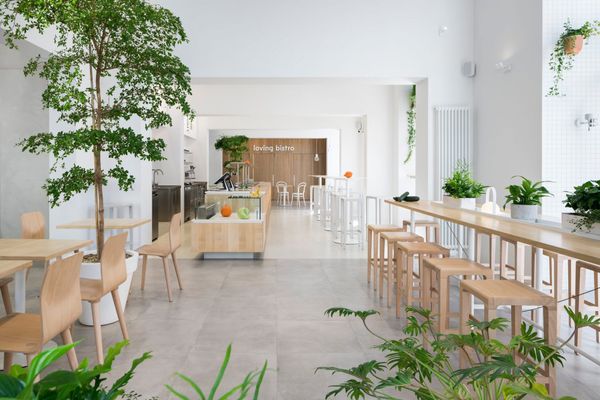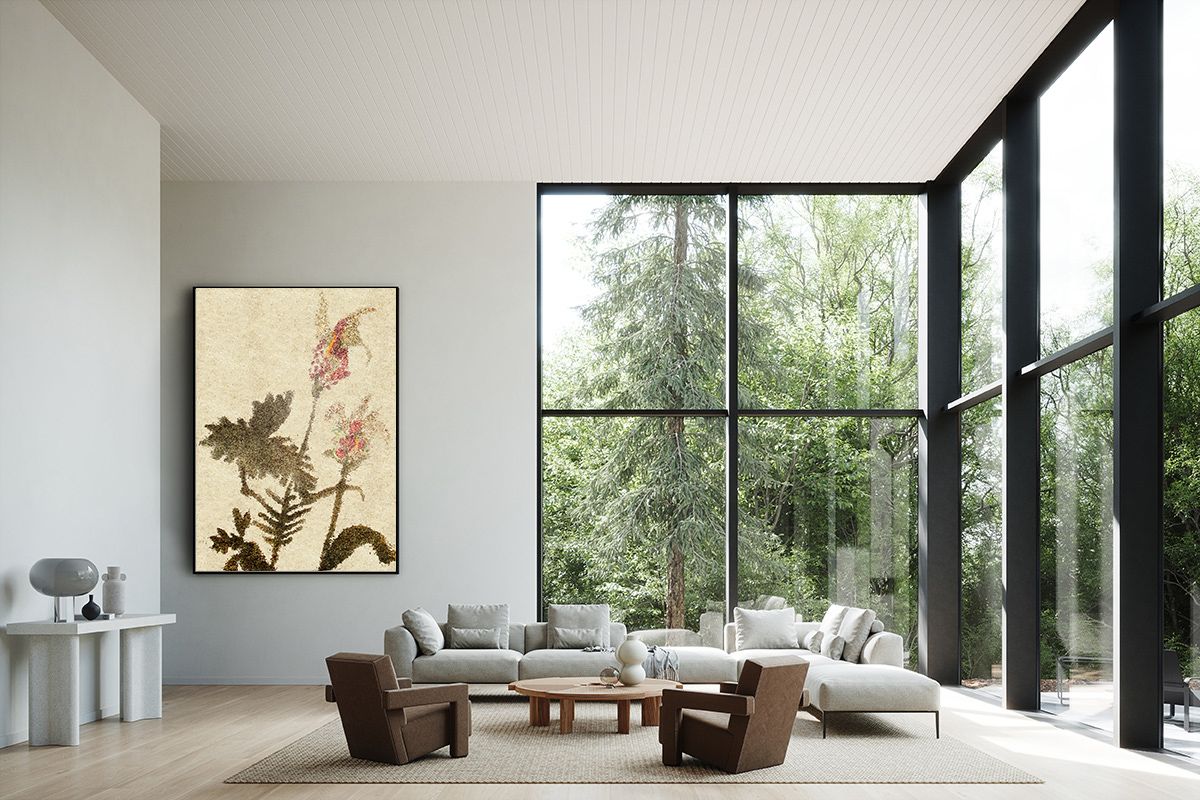Turning from textiles to plants, Csenge Győrbíró now creates multisensory artworks with the involvement of nature itself. Unique scent combinations and tactile, natural surfaces: an arboretum in your living room! Interview.
You graduated as a textile designer at the Moholy-Nagy University of Art and Design. How did then you turn from textiles to plants?
My first truly defining experience was during my Erasmus semester in Poland where I started experimenting with banana waste. I have already been working with plant dyeing towards the end of my studies at MOME and, after graduating, I started an internship in Hamburg at the workshop of an American paper artist, Drew Matott, where I was involved in a wide variety of plant experimentation projects.
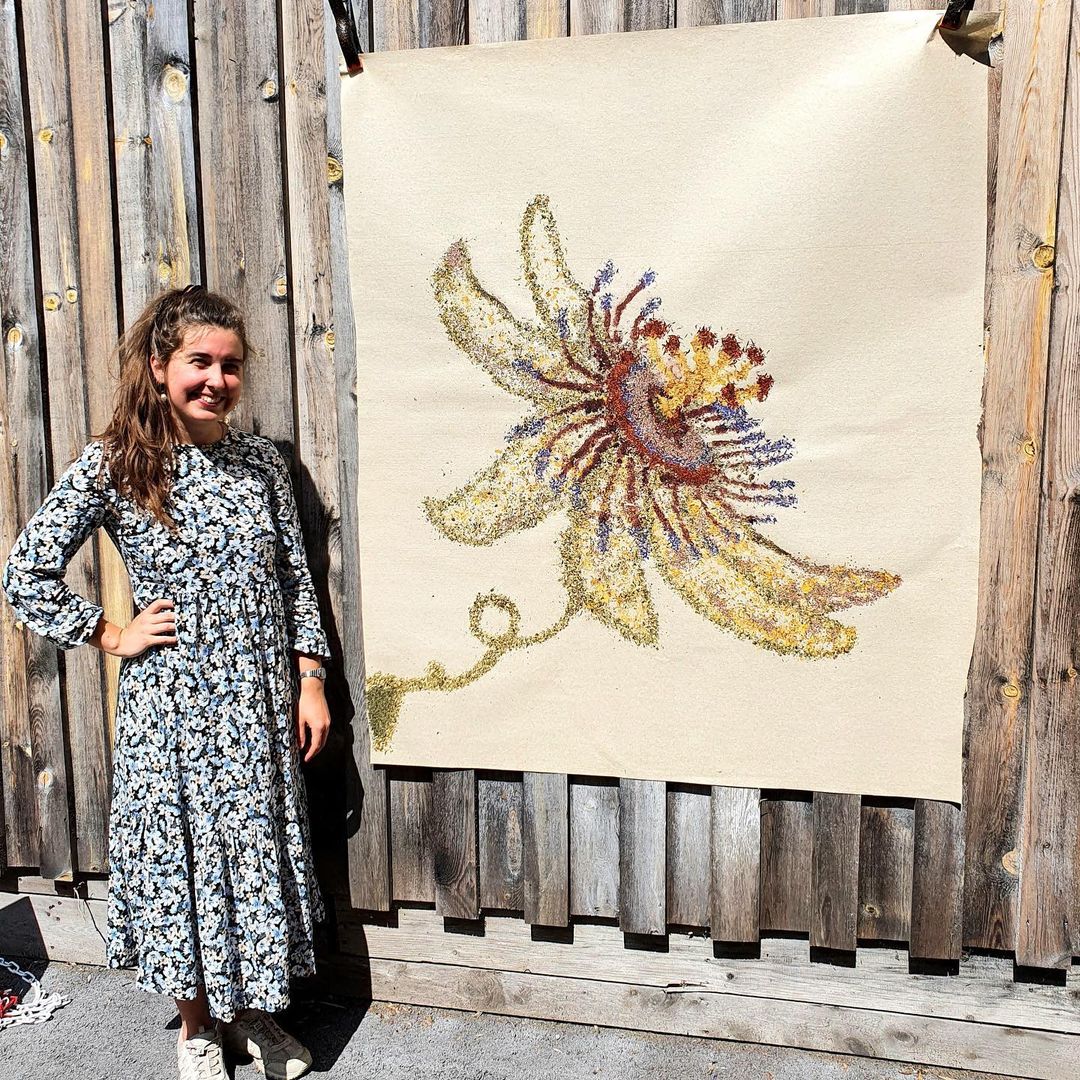
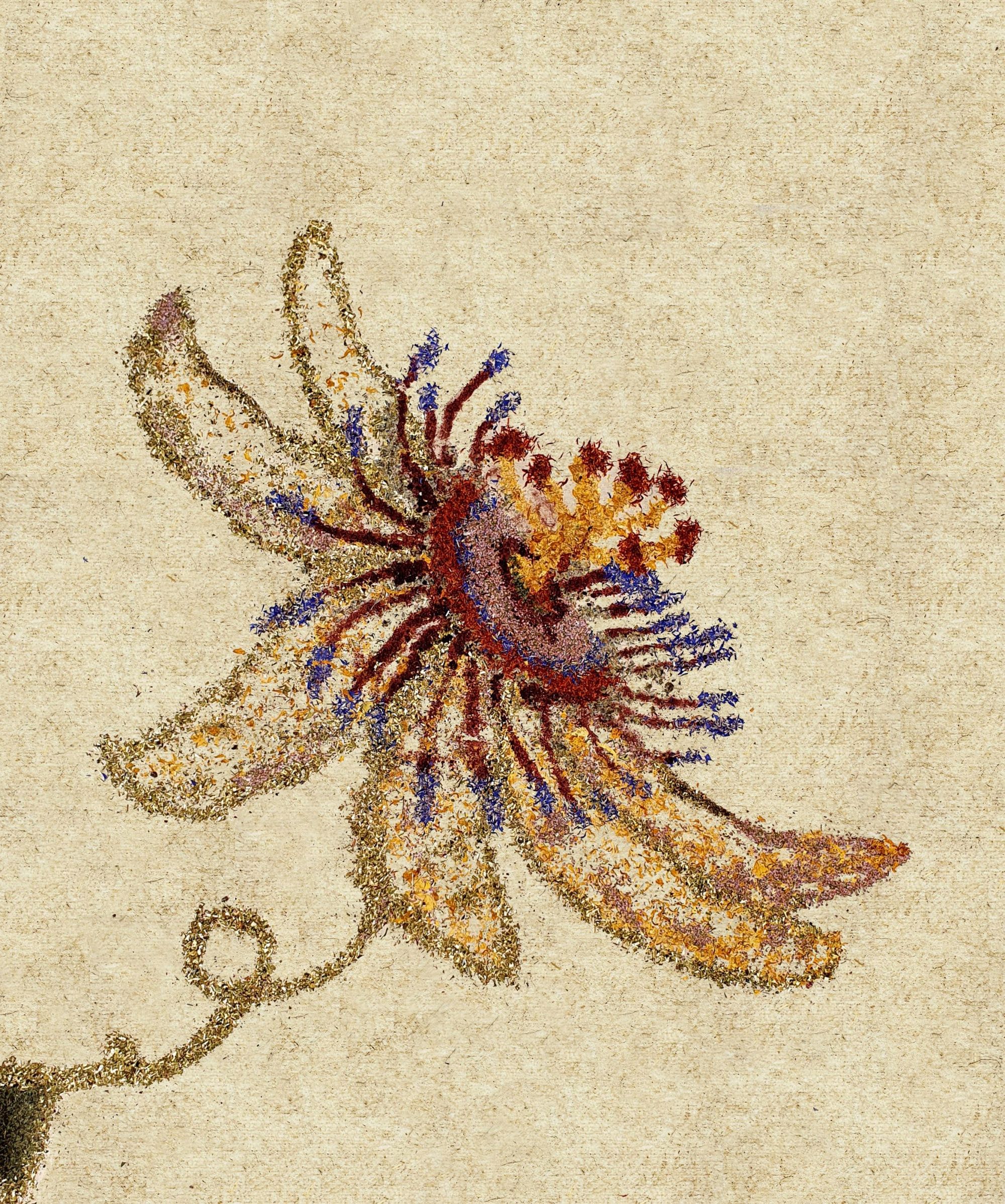
How is creating concepts from plants similar or different from working with textiles?
For me, it is completely different. I must admit, the freedom offered by raw plant parts: petals, stems, leaves, and small fruits, and the possibilities they provide, is incomparable to a creation of knitted or woven textile structure. That is a much more controlled and rigid process. This type of composition making is much more akin to textile dyeing as plants do not become part of the fabric; they remain surface elements rather than patches of color. Plant parts are usually placed on a given spot by associations to then become tactile as individual textures.


What is the workflow? How long does it take to make a piece of art?
The work process is rather similar to the making of a painting where pigments themselves are the untreated, dried plant parts. The base is usually a non-woven natural linen sheet, on which the dried plants are placed. Sometimes I sketch out the form, and sometimes it is a spontaneous, highly subjective creation inspired by the plant forms. In all cases, I then apply the material by hand to the base, the rhythm of which is a slow and meditative process. The execution of the compositions varies depending on size, with larger compositions usually taking six to ten hours to complete, while a smaller piece can be completed in as little as three to four hours. Collecting, drying, pressing, sorting, arranging, and preparing the plant parts according to shades and scents take much more time than the composition.
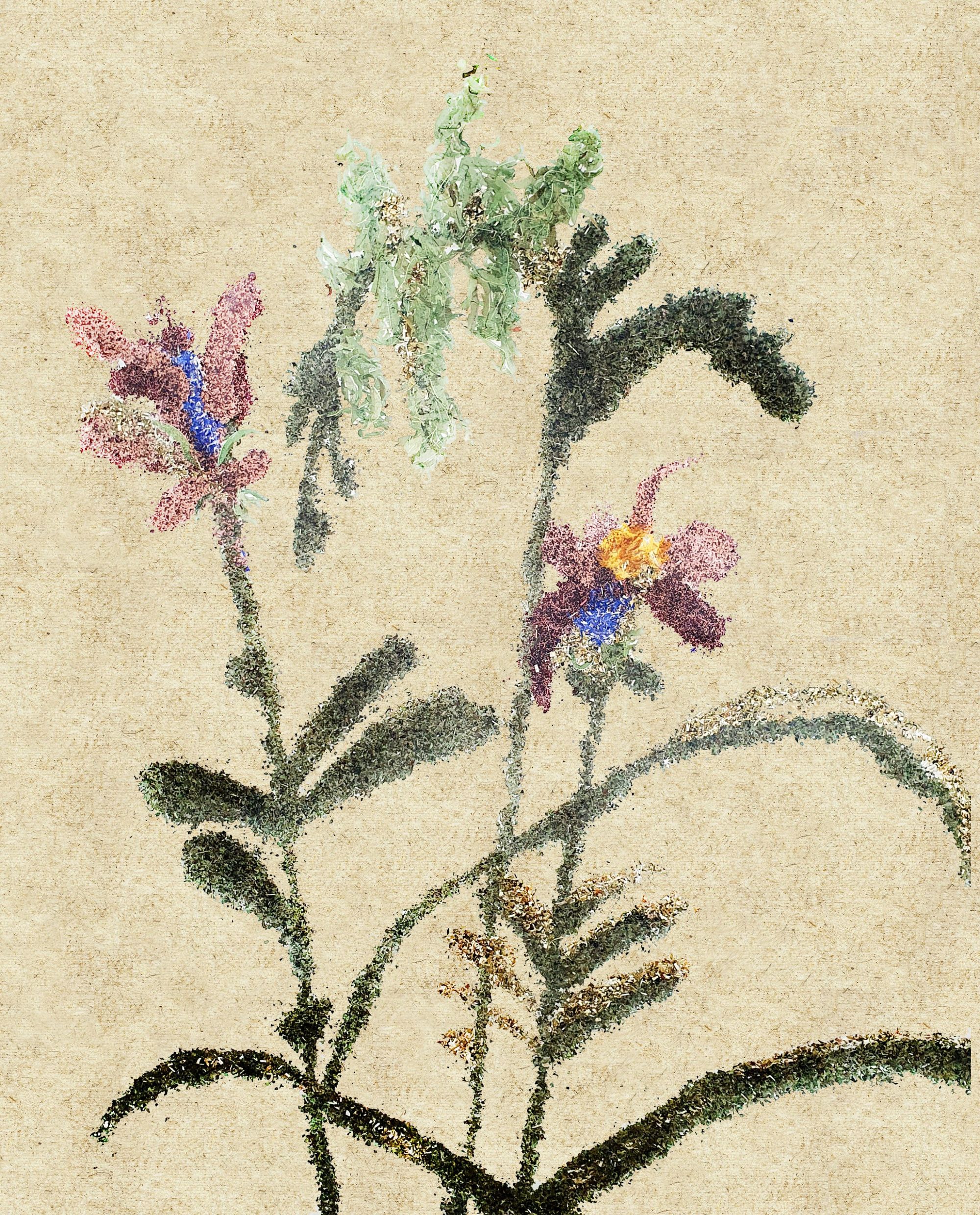
How durable are these artworks and for how long can they keep their scent?
Because of the natural materials applied, the artworks are more sensitive and vulnerable to environmental effects, such as strong sunlight and high humidity, than those made of artificial materials. However, when protected from these factors, they are very durable: in interiors, the saturation and hue of the colors do not really change, and they can retain their original fragrance for many years. Of course, the intensity of the fragrance varies from plant to plant, with lavender’s aroma lasting much longer than that of raspberries and strawberry seeds, for example.
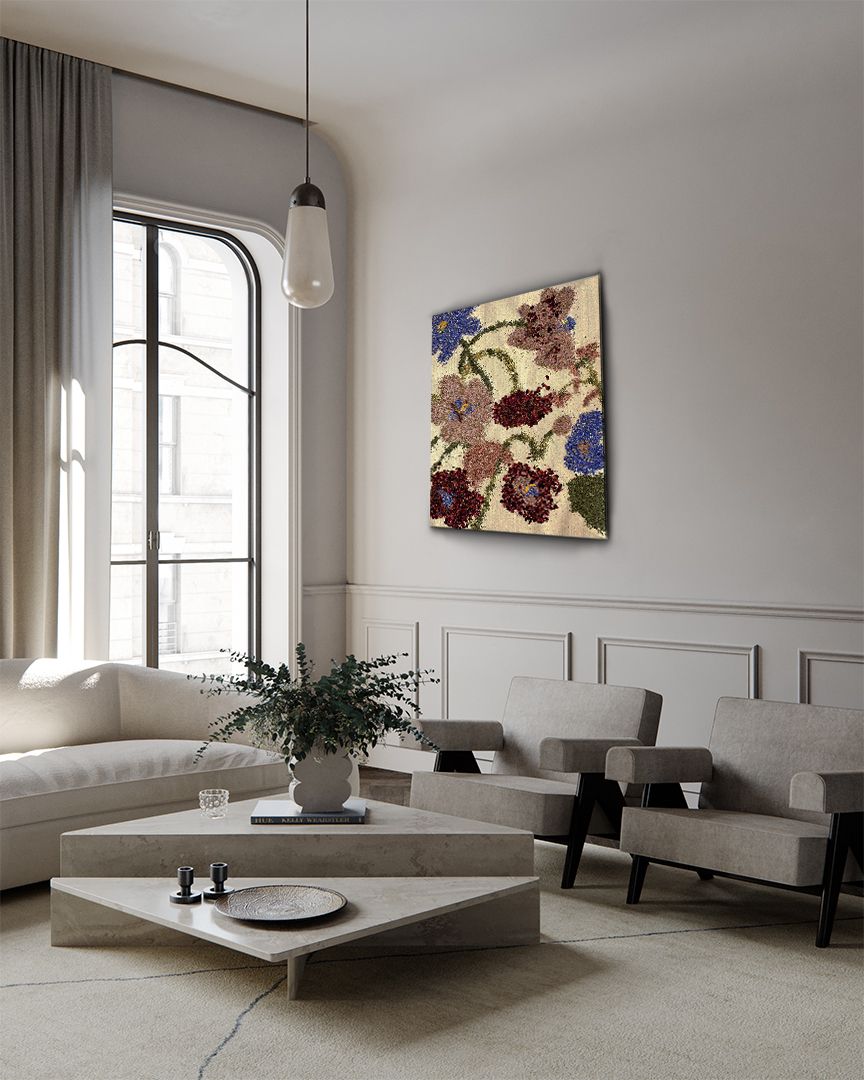
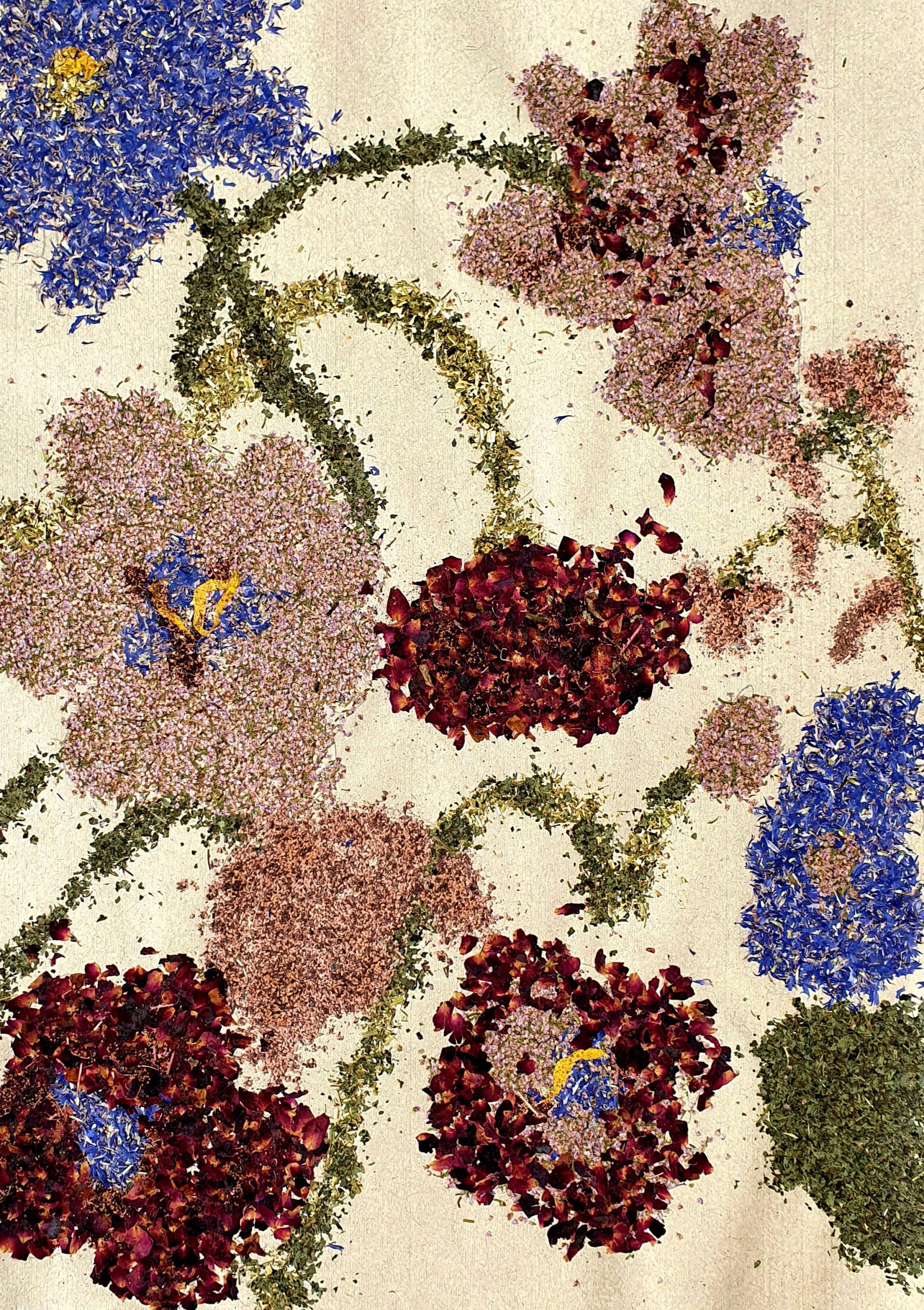
What does sustainability mean to you?
Sustainability is a priority for me both in my personal and professional life, and I am happy to see that it is not only a privilege of activists, but that more and more designers and artists are addressing the issue. I’m constantly asking myself how sustainable the materials I use and the way I install them are, and how I can make my processes as environmentally friendly as possible. I believe that, in addition to experimentation, our task as designers is to create with sustainable materials which show that they were created with a common cause in the creators’ minds.
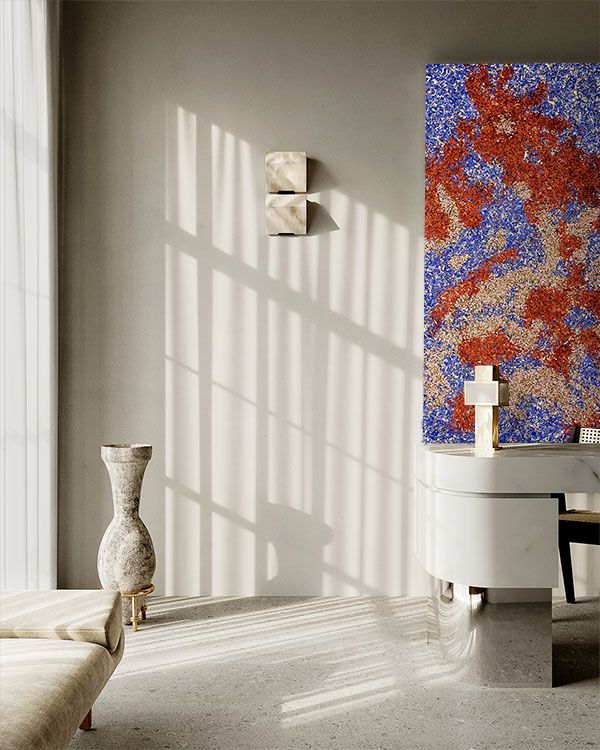
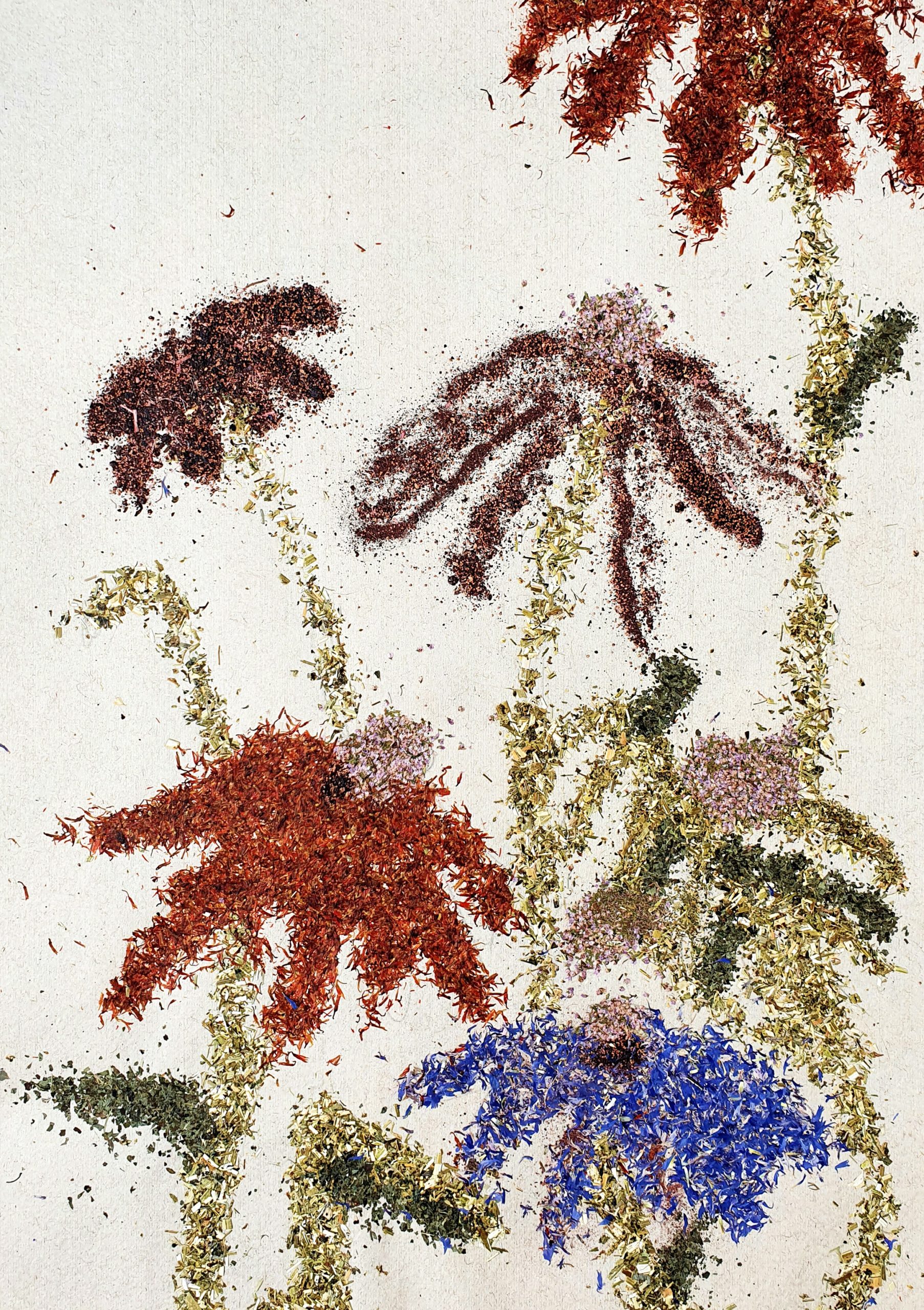
What’s next for you as a creator, what other directions are you interested in?
I will definitely stay with this medium in the near future, as I see a lot of potential in it. I would like to further explore this technique and create new projects and space installations using other natural materials that I am not yet familiar with.
Győrbíró Csenge | Instagram
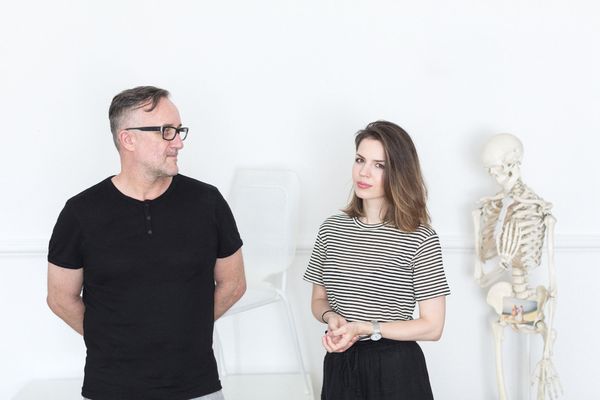
Artist duo | IO
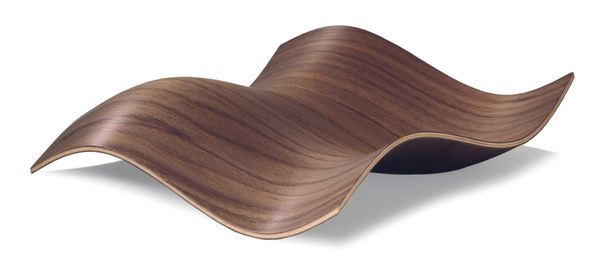
From mid-century modern to 3D plywood | Plydesign’s open call
